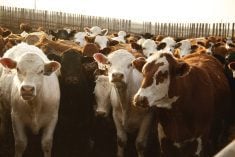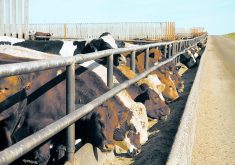WINNIPEG — Some people in the feed industry are too young to recall the last update to national feed regulations, but that could soon change.
“I’m really optimistic,” said Melissa Dumont of the Animal Nutrition Association of Canada.
“We really are expecting these regulations to be published in 2024 unless someone in the government at a very high level for some reason makes this stop.”
Read Also

Pork sector targets sustainability
Manitoba Pork has a new guiding document, entitled Building a Sustainable Future, outlining its sustainability goals for the years to come.
The Feeds Regulations spell out the rules by which animal nutritionists and feed companies must follow, as they govern most aspects of feed formulation.
The last regulations were introduced in 1983, long before modern science and methods were in practice, leaving many producers, nutritionists and feed companies frustrated. The new regulations are intended to encompass advances made in the past 40 years.
The government announced its intention to update the regulations in 2011, with an expected one to three year implementation, but the process bogged down, and “we’re still talking about it today.”
However, Dumont said she saw many signs that the new regulations will be announced within the calendar year.
They are expected to include:
• A delineation of which products need to be registered in Canada.
• More flexibility in the basic nutritional content of feeds, removing the minimum and maximum levels of some nutrients in mixed feeds.
• An easier process for amending the regulations when feeding science advances.
• Allowing more veterinary products to be mixed into feed.
• Requiring all commercial processing facilities to be enrolled in the FeedAssure program.
• Better licencing of feed businesses.
Dumont said she never thought the 1983 regulations would still be in force in 2024.
“Here we are 10 years later and still don’t have (the new regulations) published, but … the good news is that the end is finally in sight.”


















